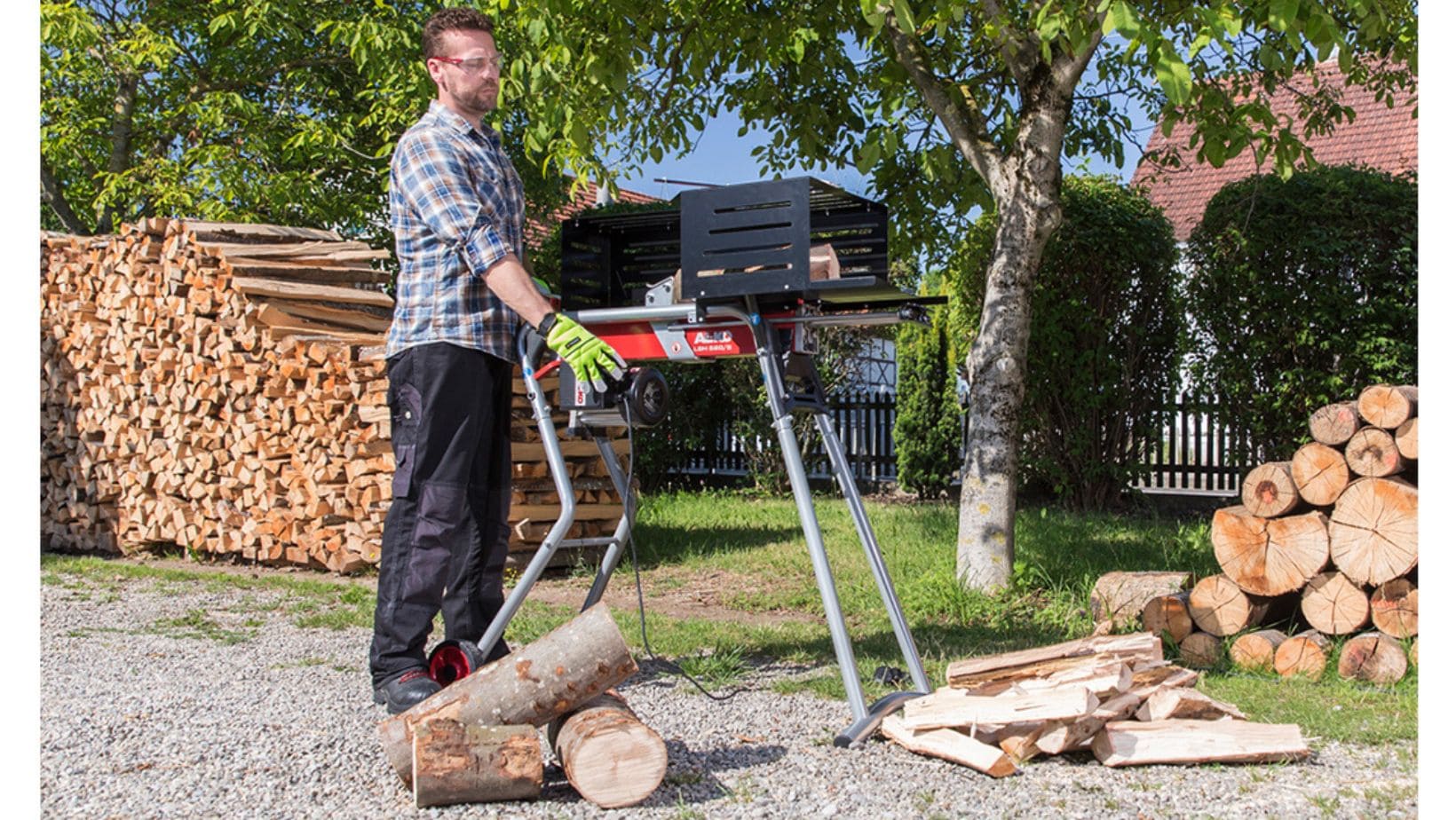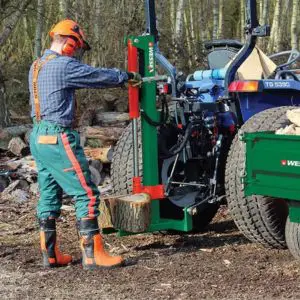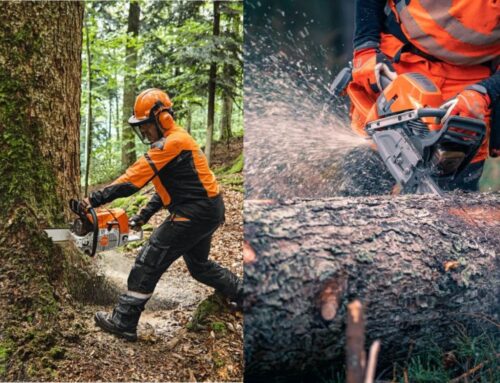
What Factors to Consider When Buying a Log Splitter
Log splitters are available in a range of sizes, have varying levels and sources of power, and are used both domestically and in commercial settings. What these machines all have in common is that they are designed to cut logs into smaller, more manageable pieces of firewood.
Here, we explain why you should consider buying a firewood splitter. We then discuss the various factors you will need to weigh up when choosing the best log splitter for you.
Why Buy a Log Splitter?
 Using a log splitter has a number of advantages over cutting your firewood by hand. Firstly, these machines split logs a lot quicker than would be possible if you used an axe. Secondly, they do the job exceptionally safely and with unrivalled accuracy. And thirdly, wood splitters require minimal strength to operate, so you can get your cutting done without the backbreaking effort associated with axe work.
Using a log splitter has a number of advantages over cutting your firewood by hand. Firstly, these machines split logs a lot quicker than would be possible if you used an axe. Secondly, they do the job exceptionally safely and with unrivalled accuracy. And thirdly, wood splitters require minimal strength to operate, so you can get your cutting done without the backbreaking effort associated with axe work.
What’s more, pound for pound, smaller, pre-cut logs tend to be more expensive than buying larger ones that are uncut. So, if you own a firewood splitter, you’re able to purchase larger logs at a cheaper price and save yourself some money.
This makes log splitters a great long-term investment for anybody who has a wood burning stove, open fire, or needs small logs for some other purpose.
Choosing the Right Firewood Splitter
If you’re going to find the best log splitter for your own specific requirements, you need to be able to differentiate between the various firewood splitters for sale.
To do this, it’s wise to consider the following factors…
Horizontal vs Vertical Log Splitters
 In terms of their design, log splitters are either classified as horizontal or vertical. This refers to the way the log sits on the machine.
In terms of their design, log splitters are either classified as horizontal or vertical. This refers to the way the log sits on the machine.
Horizontal Log Splitters
With horizontal log splitters, the log lies flat on the platform and the splitting wedge moves in a horizontal direction to cut the wood.
Horizontal wood splitters are usually the easier to manoeuvre and are typically designed to cut smaller logs. For these reasons, they are the most popular type of log splitter on the domestic market.
 Vertical Log Splitters
Vertical Log Splitters
Vertical log splitters hold the log in an upright position, which allows the machine to split it from top to bottom.
Generally speaking, vertical log splitters are the more powerful of the two. They have the added advantage that it is easier for the operator to manoeuvre the log onto the machine, making for quicker and easier splitting. These are the reasons why vertical log splitters are better equipped for cutting larger logs, and for use in professional settings.
Splitting Force
 The splitting force relates to the amount of power generated by the wood splitter when cutting logs. It is measured in tonnage.
The splitting force relates to the amount of power generated by the wood splitter when cutting logs. It is measured in tonnage.
The key to understanding this measurement’s value is to appreciate how much splitting force is needed to cut logs of varying thickness.
For example, a log splitter with a 4-tonne splitting force should generate enough power to split a seasoned hardwood log with a 15 cm (6-inch) diameter.
However, if you needed to cut a 30-cm-diameter seasoned hardwood log (12 inches thick), you’d probably need a machine with a 7-tonne splitting force. And if you want to split a seasoned log with a diameter of 60 cm (24 inches), you’ll be looking at a wood cutter with a splitting force of 20 tonnes.
(One important thing to note here is our use of the word ‘seasoned’, which describes wood that has lost its moisture content, so is now dry and brittle. If the wood is freshly cut and so full of moisture, it is classified as ‘green’. Green wood requires much more force to split, so, in the above examples, the figures would need revising.
That said, domestic firewood should always be seasoned hardwood because when it is dry it burns more efficiently and generates more heat, while emitting less smoke and harmful by-products.)
How Much Splitting Force Do I Need?
By and large, if you’re buying a log splitter for occasional domestic use, one with a 4-tonne splitting force should suffice.
However, if some of your work is going to be quite demanding, try looking at machines with between a 6 and 8-tonne splitting force.
How Is the Firewood Splitter Powered?
 The 2 most common ways to power a log splitter are by electric and petrol. Let’s take a look at the respective advantages of each type of log splitter, right now…
The 2 most common ways to power a log splitter are by electric and petrol. Let’s take a look at the respective advantages of each type of log splitter, right now…
Electric Log Splitters
As you might expect, this type of log splitter is fitted with a lead, so its mechanical/ hydraulic system can be powered by your electricity supply.
Electric firewood splitters are usually pretty compact, light in weight and quiet when operating. They’re competitively priced too, making them the log splitter of choice for most homeowners.
Petrol Log Splitters
Petrol log splitters tend to be the more powerful of the two, making them the natural choice for splitting higher volumes of larger logs. For this reason, they are better suited to professional use.
Because they don’t need connecting to a power supply, petrol log splitters’ other major benefit is that you can transport them directly to the log supply, even if it’s in a remote area.
Petrol log splitters’ major disadvantages are that they are more expensive to run, noisier, and require higher levels of maintenance, further emphasising why most homeowners choose electric log splitters for sale.
Tractor-Mounted Log Splitters
Another, although less common, type of wood cutter is the tractor-mounted log splitter.
These firewood splitters are not self-sufficient, rather they are completely reliant on power supplied by the tractor to carry out their work.
As tractors are powerful machines, this type of log splitter is usually capable of carrying out some seriously heavy-duty log splitting.
Find out more about how this type of log splitter works here.
Other Key Considerations
 The above characteristics, of horizontal/ vertical, splitting force and power generation, are the key differentials separating the various types of firewood splitter.
The above characteristics, of horizontal/ vertical, splitting force and power generation, are the key differentials separating the various types of firewood splitter.
However, you should consider other factors too, if you want to find a really good log splitter that’s right for you.
While the size of the machine and power of the engine/ motor will be directly linked to its splitting force, different log cutters vary widely in terms of the rest of their design. If you’re new to log splitting, look for a model that has a simple setup and is straightforward to use.
Bear in mind its portability too. Is the firewood splitter supplied with transport wheels? If it’s an electric model, how long is the power cable? These are things you need to know, in advance of making your purchase.
Safety is also a key factor when choosing the best log splitter. Features like a safety guard, sturdy platform/ stand and 2-handed safety control mechanism are all huge plus points, often incorporated into the design of the top rated wood splitters.
 Brand, price and warranty are important considerations too – very often linked and sure to play a role in determining your chosen model.
Brand, price and warranty are important considerations too – very often linked and sure to play a role in determining your chosen model.
Top-Quality Firewood Splitters for Sale
Here, at GMD, we stock a superb selection of log splitters for sale to cater for all of your domestic and professional needs. Our range includes many of Britain’s best log splitters.
And if you have any questions about the firewood splitters that we sell, please don’t hesitate to contact one of our friendly, UK-based Garden Machinery Experts, who will be delighted to assist you in any way they can.




